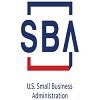How to know if an IDE is required?
09/11/2021
Category: Other Blogs
An IDE or Investigational Device Exemption is typically an approval mechanism via FDA to investigate high-risk medical devices. The data you generate from the IDE study will usually be used to support a PMA and, in some cases, a 510K. The IDE package typically includes bench data, and you can augment it with animal or cadaver data to show your product is ready for the clinic. The core of your IDE consists of a clinical protocol, and you would work with your biostatistician to ensure you have sufficient statistical power to answer your hypothesis.
You are required to define your endpoints and put all of the data into your PMA or 510k at the end of the day. Innovators have the option to bypass an IDE study in the U.S. and conduct studies abroad. You would only do this with the confidence that the FDA would accept the data generated abroad, and you can do that to ensure there are no conflicts of interest and that the practice of medicine in a foreign country that you are pursuing is materially similar to the U.S. practice of medicine.
Pre IDE process
Usually, it is often questioned if a company should meet the FDA first before launching an IDE process. It’s not always necessary, but it would be a good idea, and whether or not you choose to meet depends upon the number of factors. For example, if you meet an FDA, it’s done under what you call a pre-IDE meeting status, and that gives FDA 60 days to look into your material and decide to have a meeting or not, whereas an IDE must be responded to within 30 days by FDA.
So, if you have the time and the status of your project is early, it may be better to consider the Pre-IDE meeting and meet the FDA first. Also, if the device is new and there are not any established or known requirements for what a study would examine, then it would be wise to meet with the FDA first and discuss the product and the nature of the data that will be collected at the endpoints, that is the statistical requirement sample size and so forth.
How the companies can proceed in this process ranges from having an informal meeting where they submit a Pre-IDE request to the FDA or, on the other hand of the spectrum, having a formal meeting with the FDA. And usually, such a meeting is referred to as the decision meeting in which companies ask the FDA in advance to agree to or reach decisions on certain aspects of their trials.
Conclusion
Having an informal meeting is a much better choice. FDA is generally not happy to have a formal agreement meeting, and the term is a little bit misleading in the sense that there is no requirement that the FDA reach an agreement with the company on any of the points on the agenda only that they consider whether an agreement can be reached. So given those factors, usually, you can get everything you need out of an informal meeting or the pre-IDE meeting.
tagging: Pre IDE


